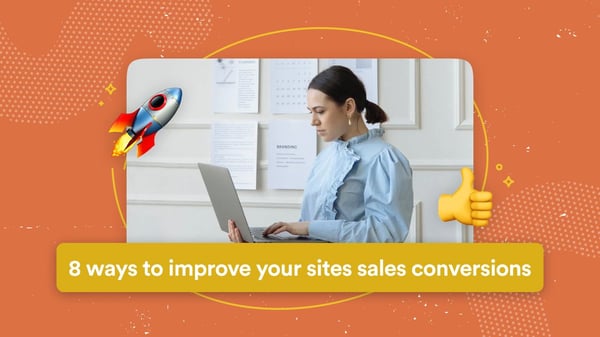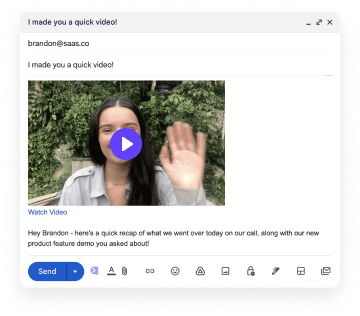Whether you have an outstanding product or the most competitive market rates, if your audience is clueless about you, they’ll never purchase it. This is pretty common both in the B2B and B2C world. Fortunately, there are specific strategies that you can employ to boost your sales conversion rate.
It’s also worth noting that B2B buyers are a lot more challenging than B2C customers since most of them want a detailed plan before making a purchase. So, generating leads can be more problematic when targeting B2B buyers.
That’s because 90% of B2B buyers do comprehensive research before purchasing. You need to work on your site to boost your sales conversion rates.
Here are eight actionable ways to boost your sales conversions on your B2B website:
1. Make use of lead scoring
An Eloqua study found that businesses using lead scoring enhance their previous closing rates by at least 30%. It’s worth noting that B2B conversion rates are usually lower than B2C companies. Therefore, an increase in this scale is quite significant.
If you’re planning to make an ecommerce website, lead scoring allows you to segment high-quality leads into different groups- those who want to buy, those close to buying, and those that are unlikely to buy.
By setting up lead scoring for your business, you can look for leads to score via top conversion channels like organic traffic, social media platforms, and even email marketing engagements.
Also, by using analytics in covering these channels, you’ll get the data you need to know which points you’re likely to close prospective customers in your conversion process and how you can work on it.
2. Gather and analyze acquired data
Most people overlook this strategy, but you must also pay attention to how you can analyze acquired data. Gathering relevant information lets you know whether the decision you’re about to make benefits your business in the long run.
Based on your collected data, you can plan out a new set of strategies or adopt different marketing tactics that you can use on prospects to bring in more sales. Through detailed analysis, you’ll know how much time your team needs to sell a particular product or service and which prospects you need to pay more attention to.
Gathering and analyzing relevant data helps you create good marketing tactics to boost your B2B site’s conversion rate optimally.
3. Engage and re-engage with marketing
You can use content and email marketing strategies to nurture leads, turning them into sales conversions.
If you want to turn your site into a sales-generating machine, you should cover blog posts, infographics, and bylined articles. It will help if you highlight your business and any potential issues prospects might have.
One way to garner leads, for instance, in-depth, long-form content. Not only does long-form content help you rank better on search engines, but it also allows you to answer and address B2B questions in detail.
Email marketing campaigns are also one of the best options for increasing conversions. One of the most significant advantages of email marketing in the B2B space is that you can utilize it to drive engagement. Your subscribed leads are also likely to convert into sales, and you can re-engage with them if they start slipping away. Check out the best email marketing software and tools.
4. Make your offer clear and compelling
You must be clear about what you’re offering, what value you provide, and what particular action you want visitors to take.
Anything you do in “tricking” users into taking action they weren’t motivated to take will backfire, causing them to lose their trust in you. The key is to make it simple for prospects to take actions they’re already motivated from the get-go to take.
Here are some key things that you can do:
- Focus on one goal per page. What’s the single action you want them to take?
- Get rid of the elements that distract them from taking that action.
- Remove any unnecessary steps in the process of reaching their goal.
5. Capitalize on social proof
Social proof is a powerful aspect of your B2B decision-making process. The more testimonials you have, the more trust and credibility you can build.
Here are some critical steps to gather and create better testimonials:
- Know what customer objections are through surveys and polls
- Ask the right questions in the correct order
- Write testimonials as if you’re telling a story
- Answer any objections head-on
- Create your testimonial page for optimal engagement
- Improve your social proof with the abundance of testimonials
Your customers will love your honesty, especially if it comes from their peers. The bottom line is that no matter how persuasive your marketing copy is, consumers will always trust people more than they trust you.
6. Improve the user experience
Customers will likely buy from brands with an excellent user experience. This factor is key to boosting your B2B conversion rates.
One way you can improve your user experience is by optimizing your website. Optimized sites make an excellent first impression. They allow users to find out what they’re looking for. These factors increase the chance that they’ll stick around. Furthermore, search engines like Google now consider site performance an essential criterion for ranking sites.
Essential elements of well-optimized sites include the following:
- Mobile responsiveness
- Quicker loading times
- Easy navigation
- Clear calls to action
- Higher readability
7. Establish trust and credibility
A superb copy creates trust between your prospects and visitors. However, it’s not the only thing that matters.
B2B buyers are unlikely to give you their private information if they think your site isn’t secure. So make sure you double-check safety protocols and your SSL certificate, HTTPS, and TLS.
You can also show that you’re trustworthy by showing your credentials, testimonials, security badges, and privacy policy. Ideally, the more proof that you can show that you’re trustworthy, the better.
8. Look for a winning pathway to purchase
Data shows that personalized call-to-actions (CTAs) convert 202% more visitors into leads than primary or untargeted CTAs.
You need to look out for high-quality leads and build pathways to purchase. This helps you boost your conversion rates, making the sales process efficient.
If you’re starting from scratch, start with the basics. Make the sales process as smooth as possible. Make sure that all the essential information customers need is easy to find. Make your language compelling and focus on how your product or service can solve your customers’ pain points.
What makes you stand out from the rest of the competition? You can start by tracking your analytics and regularly testing your data. That way, data becomes your new best friend.
Over to You
So there you have it. Many B2B sites fail to convert because you’re not devoting enough time to the people you’re targeting, looking for marketing angles, and getting your designers to create an eye-popping layout. It’s also partly because the B2B buying process has evolved, and you need to adapt.
Also, for your B2B business to grow, you need to generate more leads and boost your conversion rates. Make sure you use the following strategies to maximize your B2B conversion rates. Good luck!




